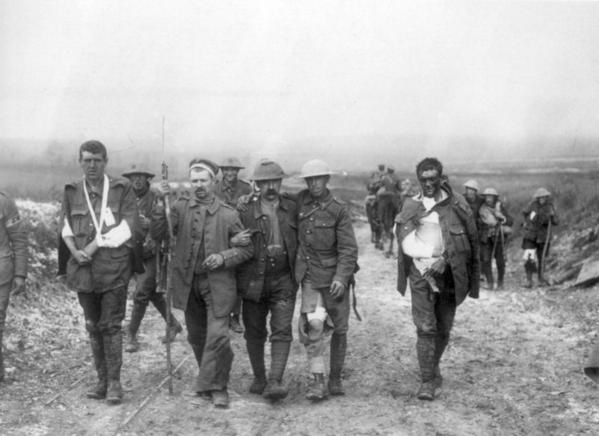Key points
Plan was similar to that of Loos:
Joint planning with French
Attack on a German "salient". (A bulge into the allied lines.)
Use of artillery. This time a massive 7 day bombardment was planned.
The plan fell apart for similar reasons:
Although the artillery bombardment was impressive, it failed to knock out the German defences which were deeply dug into the chalk uplands over which the battle was fought.
Again, the British attack came up against very heavily defended German strongholds. It was impossible for the soldiers to break through.
The consequence was that July 1st, the first day of the attack, saw 58 000 British casualties. Most of these fell in the first hour or so.
Watch this clip from a BBC documentary.
">
The casualties as a % of the British Army total did not include as many Scots as at Loos the year before. However, the number of Scottish troops who took part was considerable: 3 Scottish Divisions took part - 9th, 15th and 51st Highland and 51 infantry battalions took part in the battle at some time. Some Scottish battalions such as the 16 th Royal Scots who took part in the first day's attack, suffered badly. This battalion of the Royal Scots had been raised in Edinburgh and included the whole of the Heart of Midlothian first team and many other footballers and sportsmen as well as teachers, university lecturers etc. Almost three quarters of the battalion were killed or wounded on July 1st.
The Hearts memorial at Contalmaison on the Somme.

After the slaughter on the first day, the battle settled down into a battle of attrition: an attempt to grind the German defences down with a series of attacks. The battle finally ground to a halt in October 1916.
The Somme was significant because it marked the beginning of the middle phase of the war: the point at which the British army began to take over from the French as the main attacking force against the Germans. It also made the British public realise the true costs of war in terms of casualties. The Scots of course, had learned that lesson the year before at Loos.
The conduct of the battle of the Somme is also used by some historians who criticise the leadership of Douglas Haig. You will look at that debate in another post on this blog.
British "walking wounded" making their way to a field dressing station during the batlle. Notice the German prisoner (wearing a cap) walking with them.
